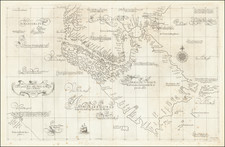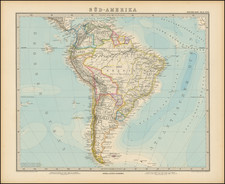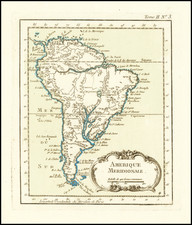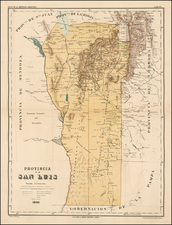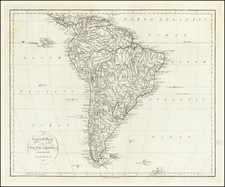Fine early engraving of the view showing the Tupinamba Indians observed by Hans Staden, which was published in Frankfurt, by Matthias Merian, as part of the continuation of De Bry's Grand Voyages.
Hans Staden (c. 1525 -1579) was a German explorer who voyaged to South America in the middle of the sixteenth century, where he was captured by the Tupinamba people of Brazil. He managed to survive and return safely to Europe. In his widely read account describing his travel and captivity, he claimed that the native people that held him captive practiced cannibalism.
Staden enlisted in 1547 on a ship that was bound for Brazil. He returned from this first trip in October 1548. In Seville, he enlisted for a second trip as a volunteer in an expedition for Río de la Plata which sailed in March, 1549. On reaching the mouth of the river, two ships sank in a storm. After vainly trying to build a barque, part of the shipwrecked crew set out overland for Asuncion. The rest of the crew, including Staden, sailed upon the third vessel for the island of São Vicente but were also wrecked. Staden with a few survivors, reached the continent in 1552.
A few weeks later, while engaged in a hunting expedition, Staden was captured by a party belonging to the Tupinambá people of Brazil, an enemy group of the Tupinikin people and their Portuguese allies. As Staden was part of a Portuguese crew, he was perceived of as an enemy and taken to a village (the predecessor of today's Ubatuba), where he claimed he was to be devoured at the next festivity. However, Staden claimed to have won the favor of the Tupinamba Chief Cunhambebe by translating between the Tupinamba and European traders, as well as predicting a Tupinikin attack on the tribe, thus his life was spared. Furthermore, when Staden later claimed to have cured the tribal king and his household from illness through the power of prayer and Christianity, the Tupinamba embraced him and called him "Scheraeire," meaning "Son, do not let me die." He finally made his escape on a French ship and on February 22, 1555, arrived at Honfleur, in Normandy, writing a narrative of his captivity in 1557, which was later republished in several lanuages by De Bry.
Theodor de Bry (1528-1598) was a prominent Flemish engraver and publisher best known for his engravings of the New World. Born in Liege, de Bry hailed from the portion of Flanders then controlled by Spain. The de Brys were a family of jewelers and engravers, and young Theodor was trained in those artisanal trades.
As a Lutheran, however, his life and livelihood were threatened when the Spanish Inquisition cracked down on non-Catholics. De Bry was banished and his goods seized in 1570. He fled to Strasbourg, where he studied under the Huguenot engraver Etienne Delaune. He also traveled to Antwerp, London, and Frankfurt, where he settled with his family.
In 1590, de Bry began to publish his Les Grands Voyages, which would eventually stretch to thirty volumes released by de Bry and his two sons. The volumes contained not only important engraved images of the New World, the first many had seen of the geographic novelties, but also several important maps. He also published a collection focused on India Orientalis. Les Grands Voyages was published in German, Latin, French, and English, extending de Bry’s fame and his view of the New World.









